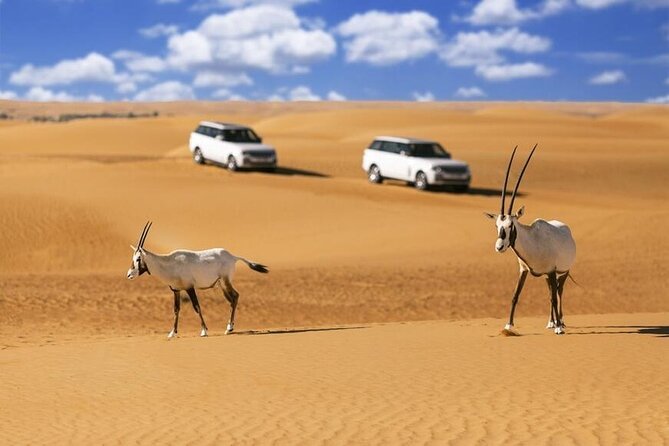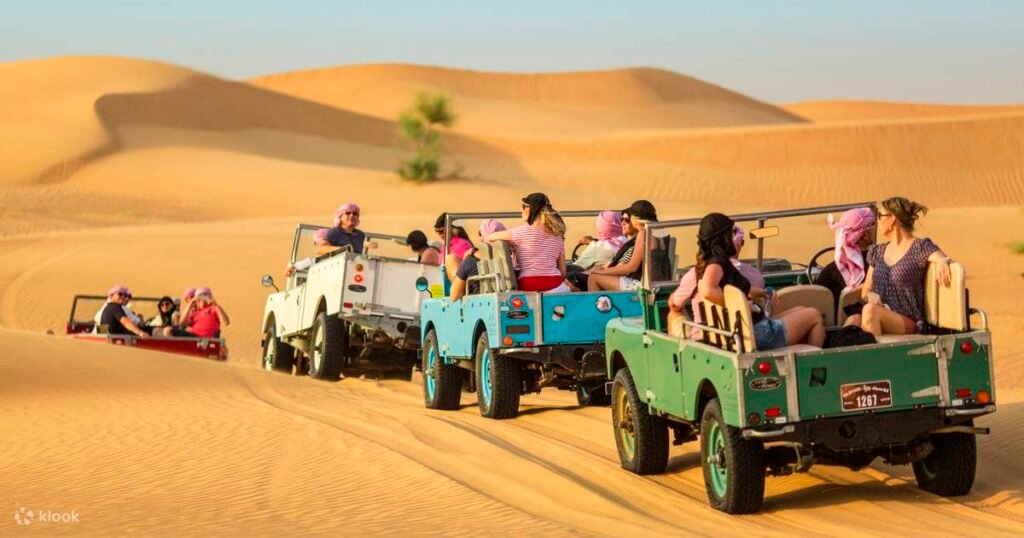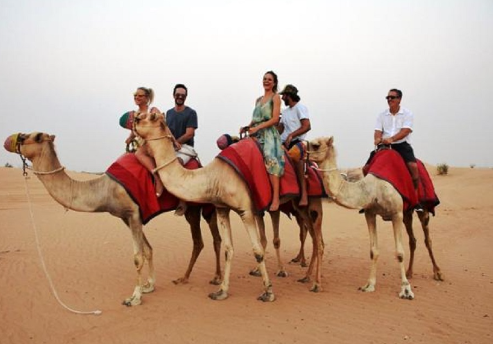Desert Wildlife Safari The vast expanse of the desert, with its endless dunes, scorching sun, and seemingly lifeless landscapes, often evokes images of desolation and emptiness. However, beneath the surface of these arid environments lies a world teeming with fascinating and resilient creatures. Desert wildlife safaris offer a unique opportunity to witness the remarkable adaptations and survival strategies of these animals in the harshest of conditions. In this blog, we will take you on a journey through the captivating realm of desert wildlife, spanning various deserts across the globe.
Table of Contents
Introduction:
Embarking on a desert wildlife safari is like entering a realm of mystery and survival, where life thrives against the odds in an arid landscape. The vast stretches of sand conceal a myriad of fascinating creatures adapted to the harsh desert environment. In this blog, we’ll delve into the enchanting world of desert wildlife safaris, exploring the untamed beauty and remarkable adaptations of the fauna that call the desert home.
The Oasis of Life: Contrary to popular belief, deserts are not barren wastelands; they are ecosystems teeming with life, each creature uniquely adapted to survive in extreme conditions. From the scorching heat of the day to the chilling cold of the night, desert inhabitants have evolved ingenious strategies to thrive in an environment where resources are scarce.
Choosing the Right Desert Safari: Desert wildlife safaris come in various forms, from traditional camel treks to modern 4×4 expeditions. Choosing the right safari depends on your preferences and the specific desert you’re exploring. The Sahara, Kalahari, and Thar deserts each offer a distinct experience, showcasing the diversity of life that has adapted to their unique conditions.
Meet the Desert Dwellers in Desert Wildlife Safari:
- Camel Caravans: No desert safari is complete without the iconic camel, often referred to as the “ship of the desert.” These resilient creatures are well-adapted to the desert’s challenges, with their padded feet minimizing impact on the sand and their ability to survive for days without water. Camel treks provide a slow-paced, immersive experience, allowing travelers to witness the desert’s beauty at a leisurely pace.
- Fennec Foxes: The Sahara Desert is home to one of the smallest fox species in the world—the fennec fox. With its distinctive large ears that serve as natural radiators, the fennec fox is a master of thermal regulation. These nocturnal creatures venture out at night in search of insects and small rodents, leaving tiny footprints in the sand.
- Desert Elephants: In the arid landscapes of Namibia’s Kaokoveld, desert-adapted elephants roam. These majestic creatures have evolved to survive in a region with limited water sources, covering vast distances in search of food and sustenance. Witnessing a desert elephant against the backdrop of dunes is a surreal experience that highlights the resilience of nature.
- Sidewinder Snakes: The sidewinder, a venomous snake found in North American deserts, has a unique method of locomotion. Its name is derived from the sideways motion it employs to traverse the hot sand, leaving distinctive tracks in its wake. These snakes are perfectly adapted to the desert’s thermal challenges, utilizing their sidewinding movement to minimize contact with the scorching ground.
- Gobi Desert Wild Ass: The Gobi Desert, spanning parts of northern China and southern Mongolia, is home to the Gobi khulan, or wild ass. These sturdy and agile creatures navigate the vast expanses of the desert, surviving on sparse vegetation. Observing a herd of Gobi khulans against the backdrop of the Gobi’s dramatic landscapes is a testament to their tenacity.
The Dance of Light and Shadow: One of the most enchanting aspects of a desert wildlife safari is the interplay of light and shadow across the landscape. As the sun sets, the dunes come alive with shifting hues, casting long shadows that conceal and reveal the secrets of the desert. The golden hour is a photographer’s delight, capturing the essence of the desert’s beauty.

Survival Strategies in Desert Wildlife Safari:
Survival in the desert is a delicate balance, and the flora and fauna have evolved remarkable adaptations to thrive in this harsh environment.
- Nocturnal Lifestyle: Many desert animals, including rodents, reptiles, and insects, have adopted a nocturnal lifestyle to avoid the scorching heat of the day. Nighttime becomes a symphony of activity as these creatures emerge to forage for food and engage in the intricate dance of predator and prey.
- Water Storage: Desert plants, such as cacti, have evolved efficient water storage mechanisms. Their succulent tissues allow them to store water during periods of rain, providing a vital reservoir for survival during dry spells. Animals, too, have developed specialized adaptations to extract and conserve water from the sparse vegetation they consume.
- Burrowing Behavior: Many desert creatures, from scorpions to rodents, have mastered the art of burrowing. These underground shelters provide insulation from extreme temperatures, offering a refuge from the blistering heat of the day and the cold of the night.
Conservation Challenges: Desert ecosystems, while resilient, face numerous challenges, including climate change, habitat loss, and human-wildlife conflict. Conservation efforts are crucial to preserving the delicate balance of these unique environments and ensuring the survival of the species that call the desert home.
- Community Involvement: Engaging local communities in conservation efforts is key to the sustainable preservation of desert ecosystems. By promoting awareness, providing alternative livelihoods, and fostering a sense of stewardship, conservation initiatives can gain the support of those living in proximity to these fragile landscapes.
- Research and Monitoring: Scientific research plays a vital role in understanding the dynamics of desert ecosystems and the species that inhabit them. Monitoring population trends, studying migration patterns, and assessing the impact of climate change are essential for informed conservation strategies.
- Tourism Ethics: Desert wildlife safaris, while offering an opportunity for education and awareness, must be conducted ethically. Responsible tourism practices, such as minimizing disturbance to wildlife and respecting designated conservation areas, are crucial to ensuring that the benefits of tourism contribute to conservation efforts.

The Magic of Desert Ecosystems
Before we delve into the specifics of desert wildlife, it’s essential to understand the unique characteristics of desert ecosystems that make them such remarkable places for a wildlife safari.
Breathtaking Landscapes:
Deserts are home to some of the most stunning landscapes on Earth. From the towering sand dunes of the Sahara to the sculpted rocks of the American Southwest, deserts offer an array of striking vistas. Exploring these landscapes, especially during sunrise or sunset, can be a soul-stirring experience.
B. Harsh Environments:
Deserts are characterized by their extreme climatic conditions. With searing heat during the day and bone-chilling cold at night, the desert poses formidable challenges to both its residents and human visitors. These conditions have led to the evolution of some of the most unique and awe-inspiring adaptations in the animal kingdom.
Rich Biodiversity:
Contrary to popular belief, deserts are far from lifeless. They are home to a surprising diversity of wildlife, from the iconic camels and scorpions to elusive predators like the desert fox and the cheetah. Desert ecosystems are a testament to the tenacity and adaptability of life on Earth.
Desert Wildlife Safaris: A Global Overview

Desert wildlife safaris can be enjoyed in various deserts around the world, each offering a distinct experience. Let’s take a closer look at some of the most renowned desert safaris:
Sahara Desert, Africa:
The Sahara Desert, the largest hot desert in the world, is famous for its immense sand dunes and captivating landscapes. A Sahara desert safari allows you to witness the Saharan wildlife, including dromedary camels, fennec foxes, and the elusive Sahara cheetah. The Sahara offers a blend of cultural experiences as well, with visits to ancient oases and Berber communities.
Arabian Desert, Middle East:
The Arabian Desert, covering parts of Saudi Arabia, Oman, the United Arab Emirates, and other countries, is known for its vast sand seas and unique ecosystems. Here, you can spot Arabian oryx, gazelles, and sand cats. The Arabian desert safari also includes experiencing the rich Bedouin culture, with traditional camps and camel rides.
Atacama Desert, Chile:
The Atacama Desert, often called the “driest place on Earth,” offers a stark and breathtaking landscape. Desert wildlife safaris here provide opportunities to observe vicuñas, flamingos, and various species of lizards. The desert’s high altitude also makes it an excellent location for stargazing, adding an astronomical dimension to your safari.
Sonoran Desert, USA and Mexico:
The Sonoran Desert, straddling the border of the United States and Mexico, is a biologically diverse desert famous for its unique cacti, such as the saguaro. On a Sonoran desert wildlife safari, you might encounter Gila monsters, rattlesnakes, and roadrunners. This region is also rich in Native American history and culture.
Namib Desert, Namibia:
Namibia’s Namib Desert is renowned for its towering red sand dunes, including the famous Dune 45. A Namib desert safari offers the chance to see desert-adapted wildlife like oryx, springbok, and brown hyenas. The eerie Deadvlei, with its ancient.
Conclusion:
Embarking on a desert wildlife safari is not just a journey into the heart of an arid landscape; it’s an exploration of resilience, adaptation, and the delicate balance of life in one of the Earth’s most challenging environments. From the graceful camel caravans to the elusive fennec foxes and the majestic desert elephants, each creature tells a story of survival against the odds. As we venture into the footprints of the unknown, let us not only marvel at the beauty of the desert but also embrace the responsibility to preserve and protect these fragile ecosystems for generations to come.
Leave a Reply